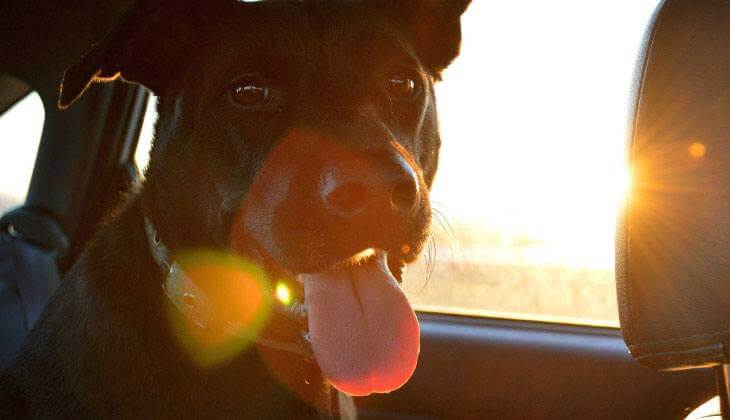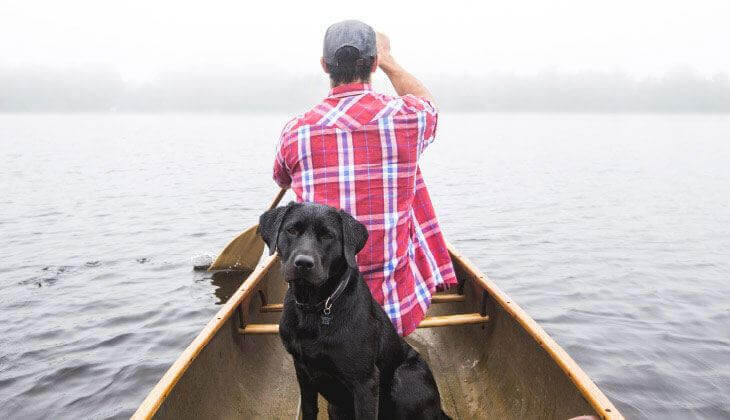
5 Ways To Make Traveling With Dogs A Walk In The Park
DOGS
3 Apr, 2019
READ 5 minutes
Packing, hitting the road and exploring new destinations is always an adventure, but when you get to bring your dog along you pretty much guarantee that the memories will be even more meaningful. Here are the top five ways to make sure that you know how to travel with a dog effortlessly and joyfully from the minute you start planning your trip:

1. START WITH A TRIP TO THE VET
Travel can be just as stressful for dogs as it is for humans. Take your dog to the vet for a routine check-up before you commit to bringing him or her along. You’ll want to be sure that they are emotionally and physically healthy enough to go the distance. If your dog has health issues or is naturally skittish or aggressive your vet may recommend that they remain at home or in a familiar setting while you vacation.
If you’re planning to travel across state lines or fly to a different country, you’ll need a health certificate for your dog, along with proof of rabies vaccination. Most airlines require that the certificate be issued by a licensed veterinarian no more than seven to 10 days prior to departure. In addition, many airlines will not allow brachycephalic dogs (those with a short nose and flat face) to travel in the cargo hold due to possible health risks.
Some dogs suffer from travel anxiety and motion sickness so ask your vet what remedies you may need to bring with you. Use caution when administering medication such as sedatives or tranquilizers, especially if you’re planning to fly because these medications are unpredictable at higher altitudes.
2. TAKE YOUR DOG FOR A TEST DRIVE
If you’re planning to travel by car and you’re not sure whether or not your dog will truly enjoy the ride, start with a 2-3 hour test drive. It’s important to see whether or not your dog is able to sit back and relax. Some dogs can, but others suffer from motion sickness, anxiety and agitation.

3. MAKE SURE YOUR DOG IS IDENTIFIABLE
Dogs really love to explore the world. When you travel to new places they step out of their daily routine. There are so many new things for them to see, smell and do. It’s important to make sure that they are not only microchipped, but also easily identifiable by a collar that has their name and up-to-date contact information, including a cell phone just in case they happen to wander away from you while you’re enjoying your adventure together.
4. PACK YOUR PUP’S SUITCASE
There’s a good chance that your dog’s suitcase will be as big as yours. You’ll want to be sure to pack food (especially if your dog is on a prescription diet), bowls, medication, treats, an extra collar and lead, a crate or travel carrier, along with plenty of water for the road. In addition, bring some of your dog’s favorite toys, pillows and blankets to remind them of the comfort of familiarity of home while you’re away.
5. MAP OUT A PET-FRIENDLY ROUTE
Keep your dog in mind while you’re mapping your route to your destination. Despite more and more hotels, restaurants, parks and venues becoming more pet-friendly, these businesses vary in terms of policies and amenities. Mass transportation, for example, may not permit dogs of a certain weight or size to board, so be sure to do your homework and know if and where you dog is welcome before you arrive.
If you plan to travel by car, remember that your dog needs to stretch, move, eat and drink so map your route in advance to ensure enough potty and play stops along the way.
If you plan to travel by air, try to book a non-stop flight to your destination. Keep in mind that many airlines won’t transport pets as cargo during excessively hot or cold periods—the danger isn’t in the air but on the ground. *PetTravel.com will help you understand what to expect when your dog travels as manifest (air) cargo and the *International Air Transport Association (IATA) can help you understand any and all regulations when your dog flies with you, including what type of crate or carrier they will need for the trip.
One last tip to keep in mind: many pet-friendly guesthouses have a high flea load and there may be ticks at your holiday destination, so pick up a Bravecto® chew while you are at the vet to make sure your dog is protected from nose to tail for 12 weeks.
Once you have all of your dog’s ducks in a row, just relax. There are so many wonderful memories in store when you’re able to travel and explore the world with your best friend by your side.

RECOMMENDED






